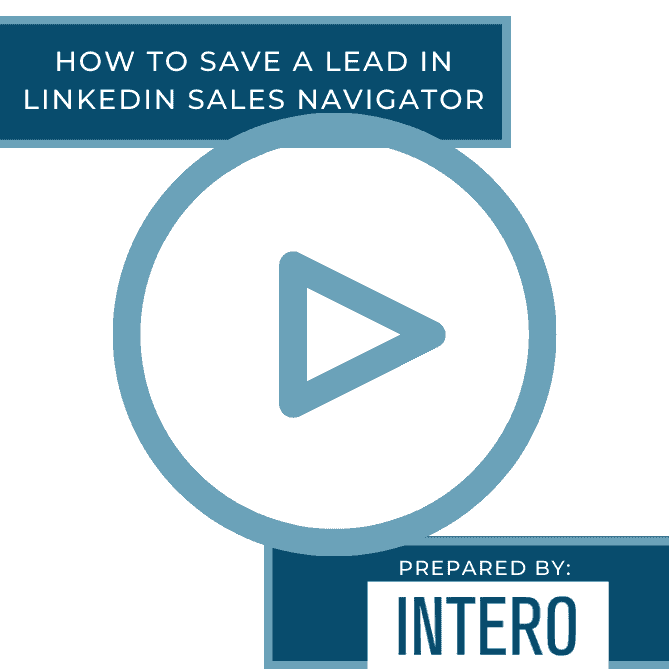Stuck working in a sales position where you’re expected to make cold calls from your city’s business journal’s “Book of Lists”, purchased lists from a broker, association member roster or chamber?
Notice the word “stuck.” It’s the operative word in the sentence. If your sales process has not evolved continually over the last few years, not only are you stuck, your company is too. This post isn’t a one trick pony rant on the value on “social selling” (one of my least favorite terms), and it’s superiority over cold calling. Instead, it’s a call to think carefully about how you begin a right-approach sales process and increase the likelihood someone will interact with you on any level. Hey, even a no is better than an ignore.
It’s both naive and arrogant to think that a sales process that worked ten, twenty or thirty years ago will continue to work in a world where people connect, talk, engage and interact on multiple channels.
Here are some recent observations:
A CEO of a large construction company says he doesn’t use LinkedIn, but when someone calls or is referred to him, he goes to LinkedIn to see who this person is and then decides, based on what he can see on their profile, whether or not he will return the call.
Hmmm, I submit he does use LinkedIn as a critical activity; qualifying and vetting people and opportunities. If you don’t pass his LinkedIn sniff test; you might be out before you even get in.
An experienced CMO of a conservative organization was a LinkedIn naysayer until he heard from a panel of clients at a conference that they vet their prospective partners and suppliers in all areas, including legal, through LinkedIn and warm connections.
I’ve always said it’s irrelevant whether you like LinkedIn; it’s not about you. It’s about whether your clients and candidates use LinkedIn to vet you that makes it relevant to you.
A current client wants to know why the very CEOs he’s interested in talking to don’t answer their phone. Our client, well over 50, highly successful and confident on the phone, is less skilled thinking of what to say next via a LinkedIn message.
His ideal client is a CEO with less than five years of experience. Yes, that probably means someone no older than their mid-forties. The truth is that CEOs today probably travel more, may not have a landline, don’t answer unknown mobile calls and rarely listen to their voicemail. However, they most likely run a good portion of their business from their mobile device.
A client gives us a list of people from their CRM with no reference on how old the list is, where it came from, and what it is about that person that makes them a potential “lead.”
When our team looks at that list in LinkedIn, most no longer work for the company, some are not on LinkedIn or have modest if any, social clues, some have retired, or worse, some have passed on. Regardless, the list is dated and not worth much for cold calling or anything else. A dated list that has been curated by someone else and in a “database” is not as valuable as a user-generated profile in a social or professional network.
Have you noticed that more and more reporters and journalists reference someone’s LinkedIn profile as proof of who the person they are reporting on is? Inc., The Wall Street Journal, and other pubs use LinkedIn as a go-to source of background for individuals.
Doesn’t the term “cold calling” or “dialing for dollars” sound so, I don’t know, callous and antiseptic when we live in such a connected, networked world? Someone recently came in for an interview and asked me how many cold calls he would be responsible for making in a day and how his cold calling success would be measured? He wanted to know the stats I had on the number of calls in a day that resulted in next steps including meetings, proposals, and closed business. All good questions if cold calling is the core of the sales process. For us, it’s not. For most, today, it’s not.
I have a strong network defined by connecting with decision-makers, executives, and influencers who serve as connectors. When I showed him my calendar filled with mostly calls, 95% of which are scheduled, he was a bit taken back. I don’t need to make 100 calls a day (I have in other positions long ago) to end up with ten calls and one new client. Instead, I can have 10 or 15 calls in a week and create engagements with four to six new clients. A much better return on effort.
The key is to continually have qualified calls with the right people on the right channel. It typically begins on LinkedIn or by email as an introduction then moves to the phone or video call. If local, it may include a face-to-face meeting.
If someone calls me, I may call them back, or even text them to acknowledge their call and then ask when it’s convenient to talk. Telephone tag in 2018 is crazy to me. Who has time to do that?
We’ve made so much of personas over the last few years, and it’s good that we’ve given our best clients a face. However, I think perhaps we’ve gone a bit overboard. Some personas are so defined they dismiss the likelihood that some of the characteristics may change quickly. Decide what’s important to this person and where they like to engage with you and suddenly you have found common ground. The channels we prefer to communicate in services to help us communicate better.
If your job is to make 100 calls a day, make sure you are then calling 100 people who are at least likely to use the phone, have a landline and check their voicemail regularly. Now, if your ideal prospect is someone who is younger, mobile and socially wired (pun unintended) making a 100 calls to get ten meetings is going to seem like walking through the Mojave without water every day.
If I were you, I would outline a plan to incorporate the plan your fearless leaders believe reigns superior because it always has, with an additional strategy of building a strong network, providing context for yourself and your company, starting and staying on course with professionally conversational comments and questions. No pitching allowed. You haven’t earned the trust to do that yet, especially if you are new to the sales profession. Preferably, find a story or two about the successes your company has provided and work those until you have your own stories to share.
Let your fearless leaders know you are willing to work this new strategy on your own time if necessary. To me, that says you are committed and ready to go the extra mile. It should say this to your company as well.
Whether your job is to set appointments, answer inbound inquiries or to generate, introduce and close business, designing a new sales strategy is necessary for your success and your company’s continued growth. Measure your results for cold calling separately from growing your network and engaging channel appropriately for 30, 60 and 90 days. See where you generate the best results. I venture to say that if you are like most of our clients, you will create better results using LinkedIn than cold calling. Test, measure and share your results with the powers that lie in your company. It’s the best way to teach some old dogs some new tricks.
P.S. This blog assumes you’ve done the upfront work. Before we begin to work with a client on outreach or even strategy, we do the following:
- Work with them to develop a client-centric LinkedIn profile that highlights who they are and what they do
- Downloaded their current network for review and next steps
- Craft messaging ideas that save time and get the right message to the right person at the right time
Have you done those critical steps yet? If not, start there and check out our other blog posts on those topics to kickstart your new sales efforts.
Want to read more posts like this? Follow our Company Page on LinkedIn or subscribe to our blog at the bottom of our website’s homepage.
Have you heard about our new membership site in:side? Visit our new website here and sign up to be the first to know when in:side is launched!





